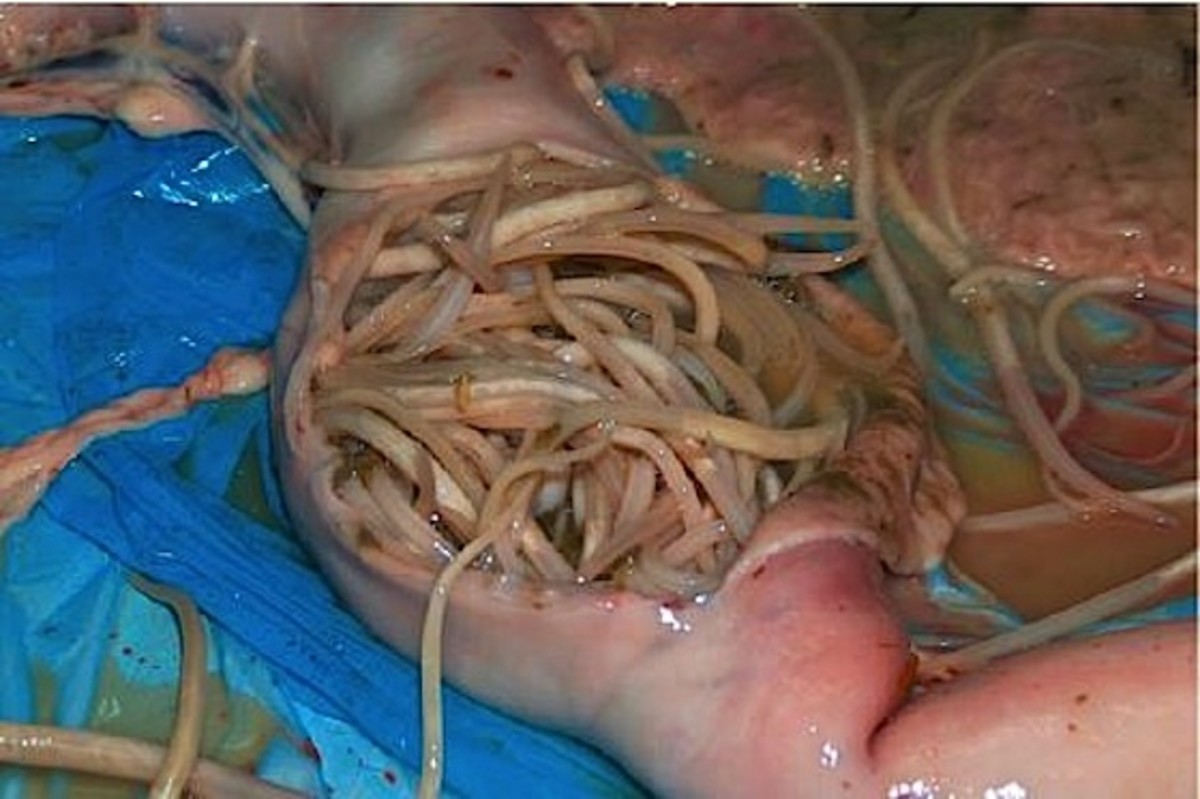
Note: Text for this article was provided by Zoetis
Effective parasite control can make or break healthy development in young horses. Foals, yearlings and weanlings are more prone to infection by Parascaris equorum (P. equorum), the most common type of roundworms (ascarids).1
At the 6666 Ranch (“Four Sixes”) in Guthrie, Texas, they understand the importance of protecting the health and well-being of their young horses well ahead of sale day.
“At times, we’ve encountered roundworm problems with some of our yearlings close to sale fitting time,” said Glenn Blodgett, DVM, Four Sixes Ranch horse division manager. “Besides affecting their overall growth, performance and appearance, parasites also make horses more susceptible to other problems like gastrointestinal disease, colic and respiratory disease.”

To create the best parasite-control plan for these young horses, Dr. Blodgett worked on a study with Zoetis Technical Services and Outcomes Research team members comparing the effects of purge deworming versus daily deworming on the health and growth of yearlings.
Horses were split into two treatment groups of comparable weights and maintained in pastures at the 6666 Ranch. Ascarid eggs can survive harsh environmental conditions, so pastures where horses graze generally are heavily contaminated and a source of continuous infection.2
The 16-week study (click link to download PDF) looked at 136 healthy American Quarter horse yearlings split into two randomly assigned groups. The first group, consisting of 35 colts and 34 fillies, were on a scheduled purge deworming plan with ivermectin (IVM) paste at eight-week intervals.* The second group of 36 colts and 31 fillies received an initial IVM treatment at the beginning of the study, followed by a daily ration of STRONGID® C 2X (pyrantel tartrate) Equine Anthelmintic at the recommended dosage for the study duration.
In this study, a pyrantel tartrate daily dewormer that targets P. equorum increased the weight gain in young horses by 7.2%, or an average of 12.2 pounds more than purge deworming with IVM.3

The study design was simple and the results, Dr. Blodgett said, are convincing.
“This study was designed to produce real results that horse owners can easily compare and incorporate into situations at home,” Dr. Blodgett explained. “We weren’t individually feeding horses, and we showed you can simply top-dress a batch of feed, place it out for a group, and they will all get their share of the STRONGID C 2X. Many people feed and wean horses in a group setting just like we did in the study, so it can be easily integrated into most feeding programs.”
On average, all horses that completed the study had a positive weight gain from days 0 to 113, illustrated in the chart below. However, a sampling of animals had a net intra-study weight loss from one four-week weigh check to the next — most commonly occurring between days 56 and 85, conforming to the infection-to-patency life cycle of P. equorum.6 In fact, more than four times as many horses in the IVM purge group (T1) experienced weight loss between each four-week check.

“Weight loss in any growing horse is an indicator of a physiological challenge and a decline in wellness,” Dr. Blodgett continued. “This study strongly affirms the value of pyrantel anthelmintics in effectively controlling P. equorum, one of the most important endoparasites of growing horses.”
Compared to yearling horses purge-dewormed with ivermectin (T1), horses given a daily feeding of STRONGID C 2X experienced a more consistent rate of gain, allowing them to be better prepared for sale time.
An important advantage of daily feeding of STRONGID C 2X is the continuous activity against P. equorum, breaking the ascarid life cycle and suppressing pasture contamination. When given daily with feed, the pyrantel tartrate ingredient kills emerging ascarid larvae in the gut before they migrate to the liver and lungs.4,5 Purge deworming allows reinfection to occur between treatments, enabling the parasite life cycle to re-establish.
“Proper parasite control helps improve the overall health and performance of the horse, which all leads to a better-looking horse that can be more profitable at sale time, too,” Dr. Blodgett said. “This is probably the best-looking group of yearlings we’ve ever had. Sale prices have increased significantly over the last few years, and I’m sure that STRONGID C 2X has a role in that.”
About Zoetis
Zoetis (zō-EH-tis) is the leading animal health company, dedicated to supporting its customers and their businesses. Building on a 60-year history as the animal health business of Pfizer, Zoetis discovers, develops, manufactures and markets veterinary vaccines and medicines, complemented by diagnostic products and genetic tests and supported by a range of services. In 2012, the company generated annual revenues of $4.3 billion. With approximately 9,300 employees worldwide at the beginning of 2013, Zoetis has a local presence in approximately 70 countries, including 29 manufacturing facilities in 11 countries. Its products serve veterinarians, livestock producers and people who raise and care for farm and companion animals in 120 countries. For more information on the company, visit www.zoetisUS.com.
Zoetis offers an Individualized Deworming (ID) reference guide to help you determine an ID plan specific to the needs of your horse.
Learn more about Zoetis by visiting zoetisUS.com and STRONGID C 2X at strongidc2x.com. Follow us on Facebook® at Facebook.com/EQStable and on Pinterest® at pinterest.com/EQStable.
*IVM 1.87%, according to label recommendations
References provided by Zoetis:
1 American Association of Equine Practitioners. AAEP Parasite Control Guidelines. Available at:http://www.aaep.org/info/parasite-control-guidelines . Accessed January 14, 2014. 2 Reinemeyer CR. Diagnosis and control of anthelmintic-resistant Parascaris equorum. Parasit Vectors 2009;2(Suppl 2):S8. 3 Data on file, Study Report No. STR13021, 6666 Ranch and Zoetis Inc. 4 Bowman DD, Lynn RC, Eberhard ML. Helminths. In: Bowman DD, Lynn RC, Eberhard ML, eds. Georgis’ Parasitology for Veterinarians. 8th ed.St. Louis: WB Saunders Co, 2002:115-243. 5 Zimmerman DR, Speer VC, Zimmermann W, Switzer MP. Effect of pyrantel salts on ascaris suum infection in growing pigs. J Anim Sci 1971;32(5):874-878. 6 Murray MJ. Treatment of equine gastrointestinal parasites. In: Chuit P, Kuffer A, Montavon S, eds. 8th Congress on Equine Medicine and Surgery. Ithaca, New York: International Veterinary Information Service (www.ivis.org), 2003.








